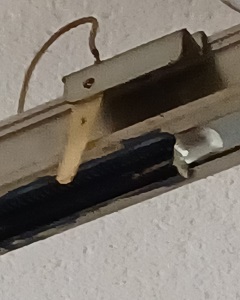Before the article, here’s what’s happening this week on our podcast, Personal Finance for Long-Term Investors:
Paul wrote in and said:
I’m years away from RMDs, but all the bad stuff that comes with them makes me worry….
Forced to withdrawal more than I need, withdrawal rates that start too high and just keep going up, trigging higher taxation of Social Security, increasing IRMAA Medicare rates, no more stretch provision for heirs.
But a particular fear is self-inflicted sequence of returns damage. I re-balance in May. As part of that, I figure that’s when I’ll take my RMD.
Let’s say my IRA balance was $1M as of 12/31. However, the market dropped 30% in February and it has not recovered.
I’m forced to calculate my RMD against a balance that doesn’t even exist anymore. My balance is down to 700k. Conceivably, this could happen many times over 20+ years. The RMD might force me to withdraw 5% or 6%, when (if I were in control) a guardrail approach might only suggest 2% for that year.
Basically, when there’s a hole in the boat, best to not make it any bigger.
I find this scenario very troubling.
Paul outlines a fascinating and possibly scary concern.
Do required minimum distributions (RMDs) have a destructive synergy with the sequence of returns risk? Can this combo “sink your boat?”

Let’s dive in. I’ll add some color and explanation to Paul’s question, walk you through my thoughts, and ultimately leave you with a solid plan of how to mitigate (or even avoid) these bad outcomes in your retirement.
Basics – RMDs, Sequence Risk, and Other Concerns
First, I would like to provide some background on Paul’s question so that you can fully understand what he’s asking.
Required minimum distributions, or RMDs, are mandatory withdrawals you must take each year from certain tax-deferred retirement accounts (like traditional IRAs and 401(k)s) starting at age 73, age 75, or possibly other ages pending future legislation. The RMD amount is based on your account balance and remaining life expectancy. Just like other withdrawals from tax-deferred accounts, RMDs are taxed as ordinary income.
The sequence of return risk states the following: not only does the magnitude of investment returns matter, but the sequence of those returns matters as well. Specifically, a particularly poor series of investment returns during the early years of retirement can permanently damage and derail a long-term retirement plan.
To learn more about the sequence of return risk, tune into Episode 87 of Personal Finance for Long-Term Investors:
Paul, who asked the question, outlines a couple of other concerns too. I’ll explain them below, but won’t dive much deeper.
- Higher taxation of Social Security**. Depending on your total income, only a portion of your Social Security income is actually taxable. Granted, these income brackets are relatively low. For example, a married couple earning $44,000 (or more) is in the highest of these brackets, and 85% of their Social Security is taxable****.
- IRMAA surcharges. IRMAA (Income-Related Monthly Adjustment Amount) is a Medicare premium surcharge imposed on higher-income beneficiaries in addition to their standard Medicare Part B and Part D premiums. The amount of IRMAA is determined based on an individual’s modified adjusted gross income (MAGI) and can result in higher healthcare costs for those with higher incomes.
- No more “stretch provision” for heirs. In short, the rules for withdrawing inherited IRA moneys used to be very beneficial for heirs, allowing them to keep large amounts of money growing tax-deferred for decades. Now, however, the 10-year rule mandates inherited IRAs are emptied in 10 years. No more “stretching” the withdrawals for decades.
**I’m still digesting the July 2025 tax bill (Big / Beautiful), and it does have a specific deduction for people 65+ on Social Security. I will return / addend /edit this once I’ve learned more.
****Note – “85% taxable” is much different than “taxed at an 85% rate.” Instead, it means that 15% of SS income is tax-free, while the other 85% is taxed at one of the Federal income tax rates (10%, 12%, 22%, etc.).

For both the Social Security and IRMAA concerns, RMDs can be negative. RMDs can lead to higher Social Security taxability and result in higher tax rates on that Social Security income, as well as higher IRMAA surcharges. All are possible.
But this is where forethought in your financial plan can pay huge dividends. It won’t always be possible to avoid extra taxes and surcharges, but a prudent plan thinks about these questions ahead of time.
I want to focus the remainder of this article on Paul’s primary concern: can RMDs combine with sequence of returns risk to torpedo your retirement, all completely out of your control?!
RMDs + Sequence Risk: Terrible? Or Merely Worth Being Aware Of?
You should be aware of how RMDs and sequence risk can negatively interact. But with proper planning, you can turn this “perfect storm” into a passing rain shower.
Sequence of Returns Exists With or Without RMDs
The sequence of returns risk is omnipresent for stock market investors, whether they are taking RMDs or not. Three principal ingredients can turn the sequence of returns risk into a real danger:
- Your withdrawal rate,
- The returns from the market,
- And where you are in your retirement/withdrawal timeline (earlier is worse for you)
It’s a bit like a fiery explosion. It requires fuel, oxygen, and a spark. If you’re missing one of those key components, you won’t get an explosion.

To that end, RMDs only matter if they increase your overall withdrawal rate. For some retirees, RMDs will do just that. But for other retirees, RMDs might not increase their withdrawal rate at all. Instead, RMDs will simply shift which account(s) they are taking most of their withdrawals from.
Sequence Risk Usually Dissipates by RMD Age
The two investors in the chart below have the same returns, but in a different sequence. They make the same withdrawal amounts each year. But look at the difference in their final portfolio value!
It’s $105,944 vs. $35,889. That’s a 300% difference over only 15 years!

Even though the “blue” investor experienced a bad sequence of returns in years 11 through 15, it barely affects them.
The “green” investor, who suffered those same returns in Years 1 through 5, got decimated.
The lesson is clear: the sequence of returns risk has much greater impact during the early years of retirement. The underlying math is simple. During the early years of poor returns, each withdrawal (in this case, a fixed $5,000 withdrawal) requires us to sell a larger number of shares, leaving behind fewer shares to participate in any future market recovery.
But will this matter by the time our RMDs start?
Based on current legislation, RMDs will start at:
- Age 73, if you’re born between 1951 and 1959
- Age 75, if you’re born in 1960 or later
- And yes, this might change in the future
Depending on where you look, the average retirement age in the U.S. falls between age 62 and age 65. Meaning RMDs won’t kick in until ~10 years into retirement.

Most of the sequence of returns risk will have dissipated by that point.
Asset Allocation Helps (Everyone)
Whether you’ve hit RMD age or not, proper asset allocation plays a pivotal role in mitigating the sequence of returns risk.
Short-term needs –> low-risk assets.
It’s one of the most frequent Bibles I thump here.
Roth Conversions (Can Be) a Massive Help
I’ve written at length about Roth conversions, and I highly recommend you read these two articles if you’re unfamiliar with the topic:
Roth conversions can play a significant role in mitigating the risk of RMDs combining with sequence of returns.
Why?
Because every dollar you convert to Roth becomes one less dollar that will be subject to future RMDs. The key is that you must start many years before your RMD age hits.


Even if your Roth conversion yields zero tax benefit, you can still choose to move those dollars away from the RMD crosshairs.
Roth conversions can also be an excellent tool for planning around IRMAA surcharges.

Taking RMDs All at Once?!
In the original question, Paul mentions his plan to take RMDs in May, as that’s when he performs his annual rebalancing.
This is a choice, not a rule. And this choice magnifies Paul’s risk.
I recommend that you consider spacing out your IRA withdrawals. Perhaps monthly, or quarterly.
Think of it as dollar-cost averaging out of your account. I’ve heard this referred to as “diversifying through time,” and it’s a perfect description. By diversifying across time, we decrease our exposure to sudden market events.
Imagine, for example, if you were forced to withdraw a large sum in April 2025, after the tariff announcement?! Not good.
…Or RMD in Early January
If the risk of RMDs plus the sequence of returns is really sticking in your craw, just take your RMD as early as possible.
Your RMD is calculated based on your IRA value(s) on December 31 of the prior year.

Let’s not even give the market a chance to crash! Just take the RMD right away in January.
Stay Invested
There’s no reason why you can’t take your RMD, withhold the taxes, and then take the remainder and immediately reinvest that money (say, in a taxable account).
The sequence of returns risks really applies to situations where you withdraw money forever and spend it, depleting your investable assets by 4 or 5 or 6% in the middle of a down market.
However, with RMDs, yes, you might have to withdraw 4 or 5 or 6% from your Traditional tax-deferred assets, but that 4 or 5 or 6% doesn’t just disappear. You need to set aside perhaps ~20-30% of the RMD to pay federal and state taxes, but the remainder can be reinvested.

Conclusion
In conclusion, it is good for Paul to think this far ahead. 99% of retirees would NOT have the foresight to do so.
That said, I think if you apply some of the tactics and strategies I’ve outlined above, the true impact of RMDs + Sequence Risk will be more negligible than you think.
What are your thoughts?
Thank you for reading! Here are three quick notes for you:
First – If you enjoyed this article, join 1000’s of subscribers who read Jesse’s free weekly email, where he send you links to the smartest financial content I find online every week. 100% free, unsubscribe anytime.
Second – Jesse’s podcast “Personal Finance for Long-Term Investors” has grown ~10x over the past couple years, now helping ~10,000 people per month. Tune in and check it out.
Last – Jesse works full-time for a fiduciary wealth management firm in Upstate NY. Jesse and his colleagues help families solve the expensive problems he writes and podcasts about. Schedule a free call with Jesse to see if you’re a good fit for his practice.
We’ll talk to you soon!









